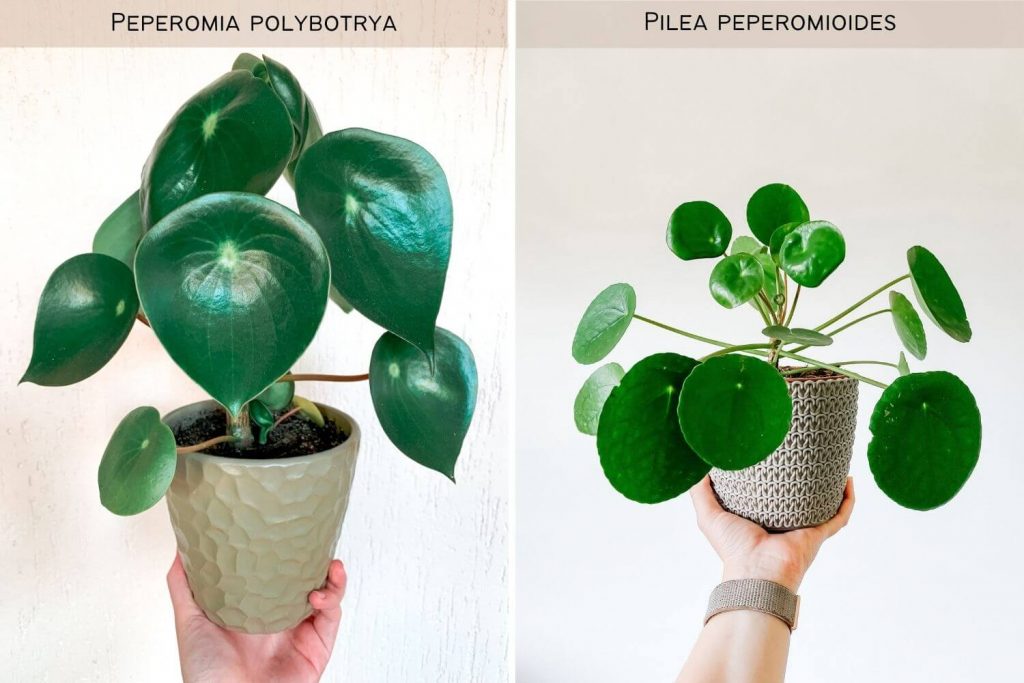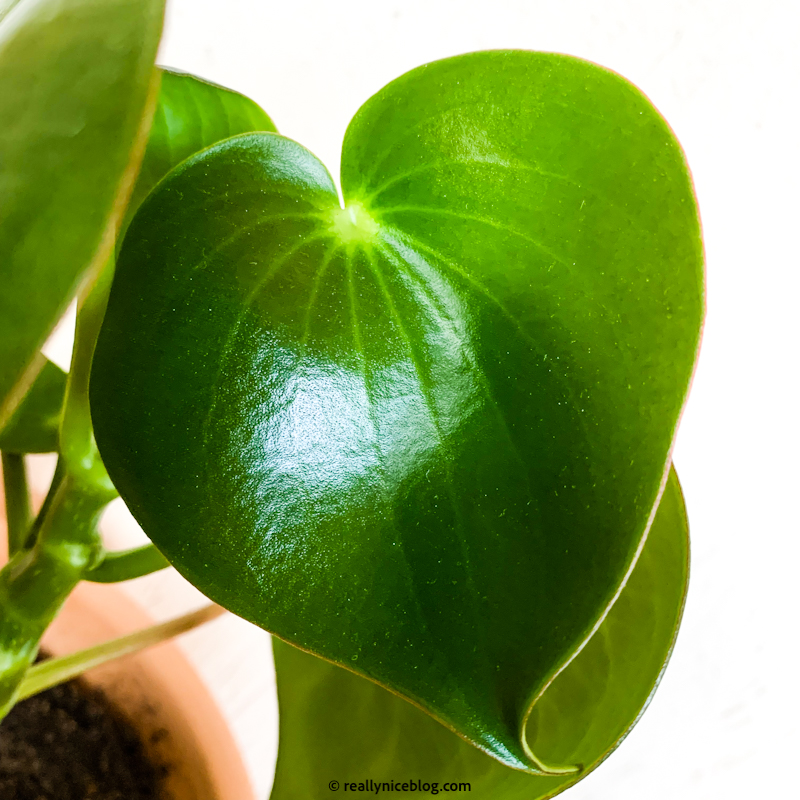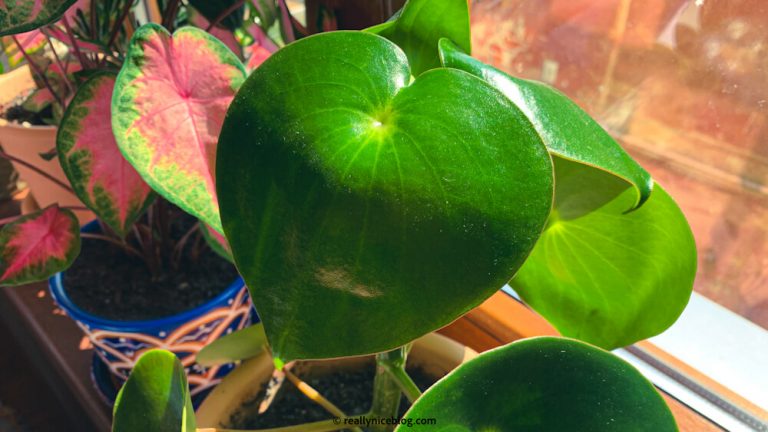Peperomia polybotria, also known as the raindrop peperomia, is a super cute houseplant for any home and interior. Its thick, deep green, heart shaped foliage is easy to match with various houseplants when decorating with plants. In addition, raindrop peperomia is perfect for the first-time plant owners as growing these plants is very simple. The care guide below covers the key things to know about Peperomia polybotrya, a beautiful addition to your plant collection.
About Peperomia polybotrya
Raindrop peperomia originates from tropical regions in South America, specifically Peru and Columbia. Besides being referred to as the raindrop plant, Peperomia polybotrya is often called a coin plant or a coin-leaf plant.
Speaking of coin plants, peperomia raindrop can be mistaken for Pilea peperomioides or the Chinese money plant. No wonder, both plants have thick, deep green, succulent-like leaves, growing from a stem. However, the shape of leaves is slightly different. Pilea peperomioides leaves are round, while Peperomia polybotrya leaves are heart or raindrop shaped with pointy leaf tips.
Raindrop peperomia’s leaves can grow up to 5 in (12-13 cm) in diameter, while the plant can grow up to 1 foot (30 cm) in height. Personally, I find peperomia’s leaves as the best indicator for how the plant is doing and if it needs to be watered.

Peperomia polybotrya Care Guide
Light
Peperomia polybotrya likes bright indirect light. Moreover, sufficient amount of light prevents legginess in these plants and helps them develop healthy foliage. Keep in mind that excessive exposure to direct sunlight may damage and burn the leaves. I placed my raindrop peperomia plants against the southwest facing windows where they can get plenty of sun.
If you want your raindrop peperomia grow symmetrical, simply rotate it once in a while. Noticed that peperomia plant is leaning towards the sun like the Tower of Pisa? Rotate your plant so that its opposite side is facing the sunlight and it should straighten up naturally.
Water
Water Peperomia polybotrya approximately once or twice a week in warm season, or when the soil dries out in cool season (every 1-2 weeks). Raindrop peperomia leaves can give you a pretty good idea of whether the plant needs water or not. Watered raindrop peperomia’s leaves feel thick and firm when touched. Thirsty raindrop peperomia’s leaves feel soft and start wilting, prompting you to water it.
Peperomia polybotrya’s succulent-like leaves and stem help the plant store water and make it more resistant to draught. For this reason, raindrop peperomia is quite forgiving if you forget to water it, which makes it a great option for beginner plant owners.
Soil
Choose a rich potting soil mix for the indoor plants. When you plant raindrop peperomia, make sure that water drains very well to avoid any waterlogging and prevent root rot. For this, perlite is always helpful – mix some in to improve water drainage and allow more oxygen to the roots.
Fertilizing
Once a month from spring to fall. This general rule for fertilizing indoor plants works as great for Peperomia polybotrya. I use the same water-soluble plant food as for my polka dot begonias.
Temperature & Humidity
Room temperature, medium to high humidity. In terms of humidity preference, raindrop peperomias are easy to grow in both normal humidity and high humidity areas such as bathrooms.
Cleaning Peperomia Leaves
Flat leaves of raindrop peperomia are very comfy and convenient for dust to accumulate. The dust layer on the plant leaves block the sunlight, which slows down the photosynthesis. Slower photosynthesis means that the plant is feeding itself slower. This reduces the overall health of the plant and no one wants that, right? Not to mention that dusty leaves do not look that great on plants. For these reasons, peperomia plants should be cleaned up regularly.
The easiest way to clean Peperomia polybotrya is to gently wipe down the dust with a damp cloth. Hold the leaf with your free hand for support and to protect from accidental cracking. This is probably the most time consuming part of caring for peperomia raindrop. However, I look at this as a way to ground yourself, meditate and relax. In other words, quality time that results in a lush green look of the plant and a calmer mind of the plant owner.

